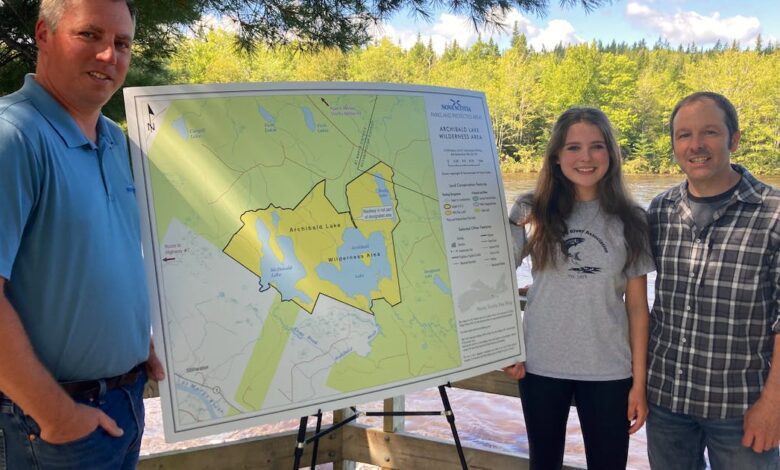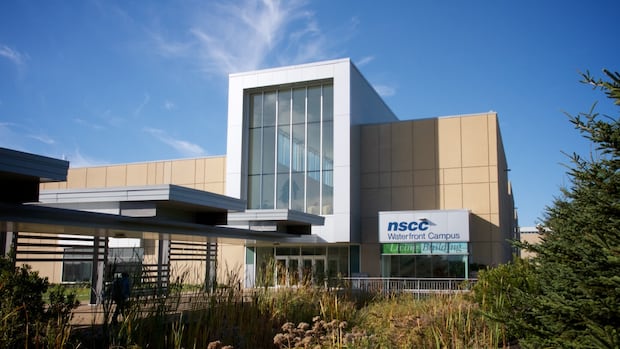Archibald Lake Wilderness Area announced for Nova Scotia’s Eastern Shore

SHERBROOKE, N.S. — The Archibald Lake Wilderness Area is going ahead.
And so, according to Atlantic Mining, will its proposed open-pit gold mine next door.
“St. Barbara is committed to the development of a gold project at Cochrane Hill,” reads a statement released Monday afternoon by Atlantic Mining, a subsidiary of Australia-based St. Barbara, in response to the wilderness area announcement.
“We understand that the Province of Nova Scotia has granted Archibald Lake protected area status and we will assess the impact of this decision.”
The 684-hectare protected area unveiled by the province during a ceremony Monday at the St. Marys River Association Interpretive Centre in Sherbrooke would deprive Atlantic Mining of a water source for its proposed gold mine.
Guysborough-Tracadie MLA Greg Morrow declined to offer comment on Atlantic Mining’s response after announcing the protected area in Guysborough County.
However, he spoke to the “pristine” nature of the area and strong local support for its protection.
“When I was knocking on doors in this area (during the election campaign), everyone told me, ‘We need this area protected,’ often with tears in their eyes,” Morrow said.
The protected area includes Rocky Lake, McDonald Lake, Archibald Lake and the old hardwood forest growing on surrounding glacial drumlins.
Recreational fishing and hunting will continue to be allowed in the area. Vehicle access to the lakes will also be maintained.
River association president Scott Beaver explained how the deep, cold water contained in the tributaries to the St. Marys River serves to cool the main channel. They also serve as spawning and overwintering habitat for Atlantic salmon.
“This is a joyous day for us,” Beaver said.
“This is a big win for biodiversity and for (the Municipality of the District of) St. Mary’s and Sherbrooke, where we have Nova Scotia’s longest river. These are places that as a society, we really should look at protecting and giving the value they deserve.”
The association has worked for over a decade to undo the damage caused by humans for centuries. That work has resulted in significant increases in salmon runs on the river over recent years.
The association has also fought the open-pit mine proposed by Atlantic Mining, formerly Atlantic Gold.
According to the mine’s project description, the 241-hectare Cochrane Hill mine site would include a kilometre-long open-pit mine and a nearly two-kilometre-long tailings pond protected by a 70-metre-high earthen wall. It is located less than a kilometre from the St. Marys River.
In its financial filings, the company has previously estimated that it would recover 350,000 to 400,000 ounces of gold from Cochrane Hill over the six years of active mine operations.
Once active mining was over, the tailings would be treated but the pond would be left in place.
“To be absolutely clear, Archibald Lake was not in any jeopardy from the Cochrane Hill Gold Project,” the statement from Atlantic Mining on Monday.
“Mining operations across the globe co-exist with lakes, rivers and streams and do it in a way that balances mining operations with healthy ecosystems.”
The Impact Assessment Agency of Canada canned Atlantic Mining’s environmental assessment process last year after the company failed to submit required survey documents or seek an extension.
At the time, the company said the move to allow the federal environmental assessment to lapse was intentional as it continued to work on planning and consultation for the proposed mine.
“St. Barbara has heard from folks across Nova Scotia who feel that new government protection efforts are creating unexpected barriers and challenges for the industry,” reads the company response to the protected area announcement.
“The company echoes these concerns and urges the province to reflect on the impact these decisions have on the future of the mining industry and the prosperity of rural communities in Nova Scotia. “
Beaver responded to the company’s intention to continue moving forward with the project.
“It’s not surprising to me,” he said. “They’re all about their investors and their bottom line. They’re going to keep coming at us.”
The new protected area garnered praise from a wide number of environmental groups Monday, including the Ecology Action Centre, Canadian Wildlife Service and salmon advocacy associations.



